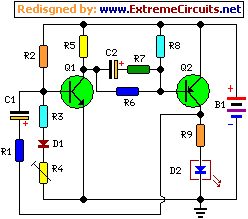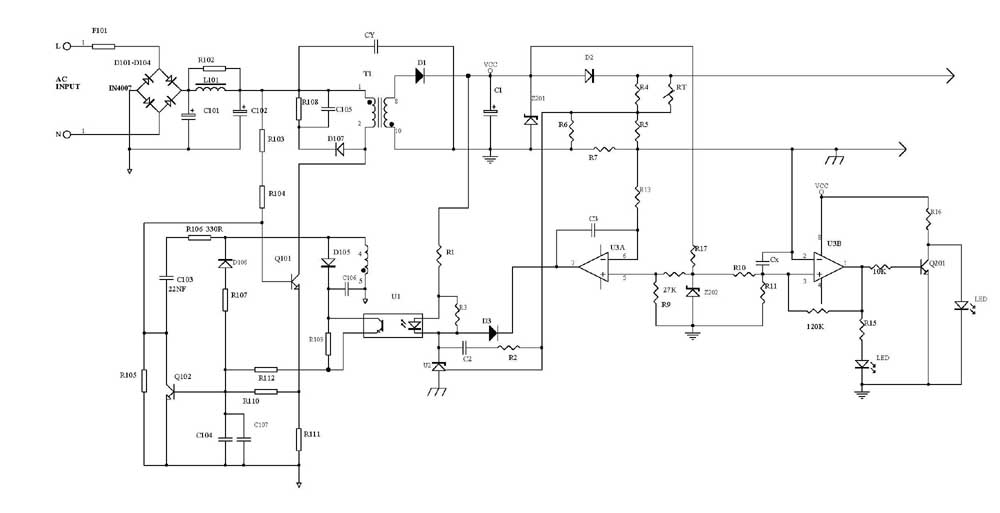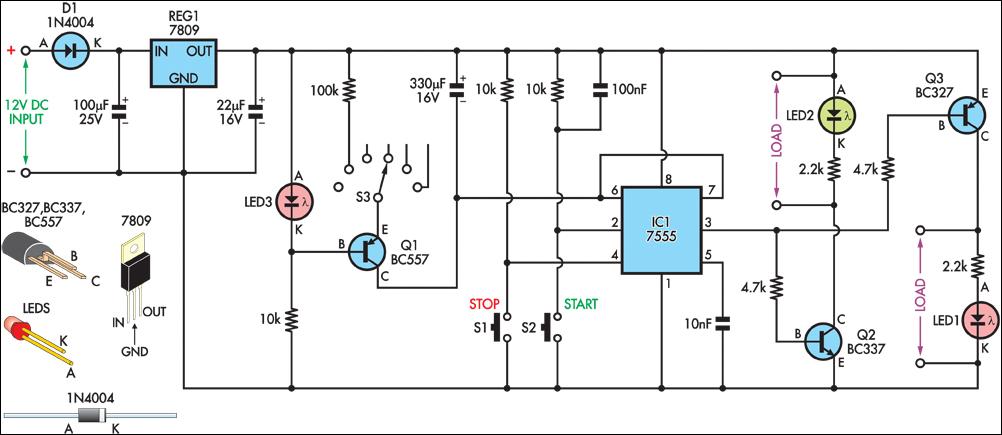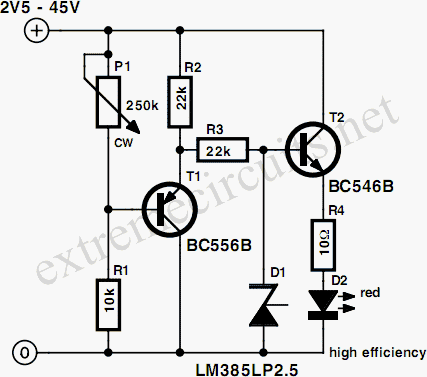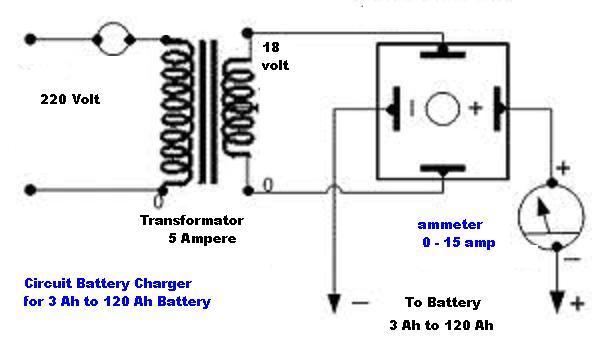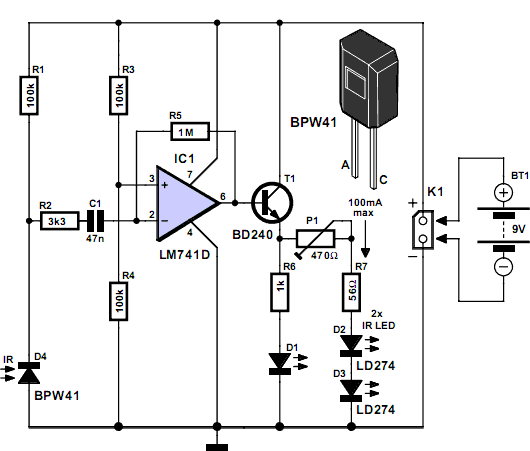
Simple but reliable car battery tester
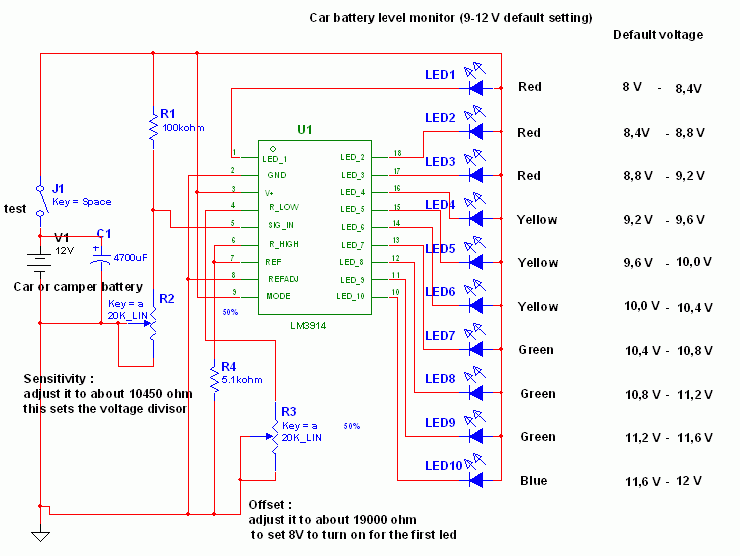
This circuit utilizes the widely available and user-friendly LM3914 integrated circuit (IC). The LM3914 is straightforward to operate, does not require external voltage regulators due to its built-in voltage regulation, and can be powered by nearly any voltage source. When the test button is activated, the car battery voltage is applied to a high-impedance voltage divider. This divider's function is to reduce the 12V input to a lower value, specifically 1.25V (or even lower). This method is preferable to relying on the internal voltage regulator to set the 12V sample voltage for the internal voltage divider, as the regulator is unable to maintain regulation below 12V (linear regulators only reduce voltage). By using a direct connection without adjustments, the regulator delivers a stable 1.25V, which is then fed into the precision internal resistor network to produce sample voltages for the internal comparators. The default configuration allows for voltage measurements between 8V and 12V, although it is possible to measure from 0V to 12V by adjusting the offset trimmer to zero (though it is noted that a car may not start below 9V). A smoothing capacitor (4700µF, 16V) is included to mitigate electromagnetic interference (EMI) noise generated by the ignition coil when measuring battery voltage during engine operation. This capacitor may not be necessary for diesel engines, though its necessity remains uncertain. For users preferring a point graph display instead of a bar graph, disconnecting pin 9 (MODE) from power will achieve this. The calculations involved in this setup are relatively straightforward.
The LM3914 IC is a versatile device designed for voltage level indication and can operate in either bar graph or dot mode. In this circuit, the high-impedance voltage divider plays a critical role in ensuring that the input voltage is accurately scaled down to a manageable level for the IC to interpret. The internal architecture of the LM3914 consists of a series of comparators that activate the corresponding LED indicators based on the input voltage levels. The precision resistors within the IC ensure that the output is consistent and reliable.
The choice of a 4700µF smoothing capacitor is significant, as it helps to stabilize the voltage readings by filtering out transient spikes that may occur when the engine is running. This is particularly important in automotive applications, where the electrical environment can be noisy due to various components such as the ignition system. The capacitor's voltage rating of 16V provides an adequate safety margin above the maximum expected input voltage.
For applications requiring flexibility in voltage measurement, the offset trimmer allows for customization of the lower limit of the measurement range. By setting the offset to zero, the circuit can measure voltages as low as 0V, which can be useful for diagnostic purposes. However, it is important to consider the operational limits of the vehicle, as voltages below 9V may indicate a battery that is not in optimal condition for starting the engine.
Overall, this circuit offers a practical solution for monitoring automotive battery voltage, providing clear visual feedback through LED indicators while ensuring accuracy and stability across a range of operating conditions.This circuit uses the popular and easy to find LM3914 IC. This IC is very simple to drive, needs no voltage regulators (it has a built in voltage regulator) and can be powered from almost every source. When the test button is pressed, the Car battery voltage is feed into a high impedance voltage divider.
His purpose is to divide 12V to 1, 25V (or l ower values to lower values). This solution is better than letting the internal voltage regulator set the 12V sample voltage to be feed into the internal voltage divider simply because it cannot regulate 12V when the voltage drops lower (linear regulators only step down). Simply wiring with no adjust, the regulator provides stable 1, 25V which is fed into the precision internal resistor cascade to generate sample voltages for the internal comparators.
Anyway the default setting let you to measure voltages between 8 and 12V but you can measure even from 0V to 12V setting the offset trimmer to 0 (but i think that under 9 volt your car would not start). There is a smoothing capacitor (4700uF 16V) it is used to adsorb EMF noise produced from the ignition coil if you are measuring the battery during the engine working.
Diesel engines would not need it, but i`m not sure. If you like more a point graph rather than a bar graph simply disconnect pin 9 on the IC (MODE) from power. The calculations are simple (default) 🔗 External reference
The LM3914 IC is a versatile device designed for voltage level indication and can operate in either bar graph or dot mode. In this circuit, the high-impedance voltage divider plays a critical role in ensuring that the input voltage is accurately scaled down to a manageable level for the IC to interpret. The internal architecture of the LM3914 consists of a series of comparators that activate the corresponding LED indicators based on the input voltage levels. The precision resistors within the IC ensure that the output is consistent and reliable.
The choice of a 4700µF smoothing capacitor is significant, as it helps to stabilize the voltage readings by filtering out transient spikes that may occur when the engine is running. This is particularly important in automotive applications, where the electrical environment can be noisy due to various components such as the ignition system. The capacitor's voltage rating of 16V provides an adequate safety margin above the maximum expected input voltage.
For applications requiring flexibility in voltage measurement, the offset trimmer allows for customization of the lower limit of the measurement range. By setting the offset to zero, the circuit can measure voltages as low as 0V, which can be useful for diagnostic purposes. However, it is important to consider the operational limits of the vehicle, as voltages below 9V may indicate a battery that is not in optimal condition for starting the engine.
Overall, this circuit offers a practical solution for monitoring automotive battery voltage, providing clear visual feedback through LED indicators while ensuring accuracy and stability across a range of operating conditions.This circuit uses the popular and easy to find LM3914 IC. This IC is very simple to drive, needs no voltage regulators (it has a built in voltage regulator) and can be powered from almost every source. When the test button is pressed, the Car battery voltage is feed into a high impedance voltage divider.
His purpose is to divide 12V to 1, 25V (or l ower values to lower values). This solution is better than letting the internal voltage regulator set the 12V sample voltage to be feed into the internal voltage divider simply because it cannot regulate 12V when the voltage drops lower (linear regulators only step down). Simply wiring with no adjust, the regulator provides stable 1, 25V which is fed into the precision internal resistor cascade to generate sample voltages for the internal comparators.
Anyway the default setting let you to measure voltages between 8 and 12V but you can measure even from 0V to 12V setting the offset trimmer to 0 (but i think that under 9 volt your car would not start). There is a smoothing capacitor (4700uF 16V) it is used to adsorb EMF noise produced from the ignition coil if you are measuring the battery during the engine working.
Diesel engines would not need it, but i`m not sure. If you like more a point graph rather than a bar graph simply disconnect pin 9 on the IC (MODE) from power. The calculations are simple (default) 🔗 External reference
Warning: include(partials/cookie-banner.php): Failed to open stream: Permission denied in /var/www/html/nextgr/view-circuit.php on line 713
Warning: include(): Failed opening 'partials/cookie-banner.php' for inclusion (include_path='.:/usr/share/php') in /var/www/html/nextgr/view-circuit.php on line 713
